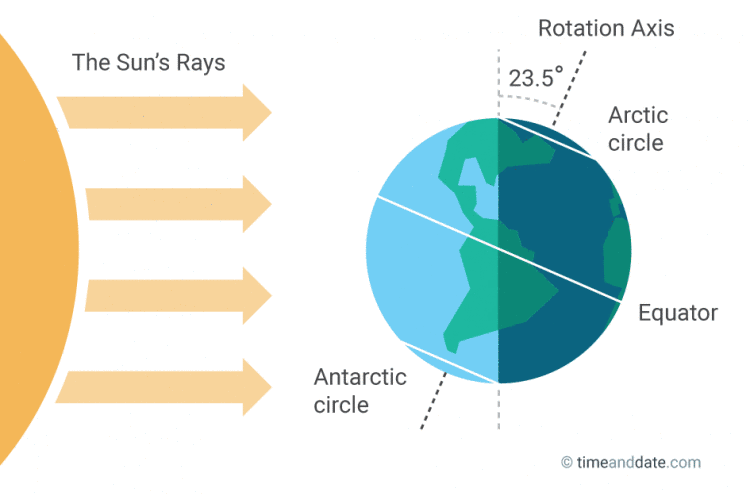In 2018, December 21st marks the winter solstice, the longest night of the year with the shortest day. During the winter solstice, the northern hemisphere is pointed at its furthest distance from the sun, bringing less light and colder temperatures. In the US, the solstice marks the first day of the winter season.
Seasons occur because of the 23.5 degree tilt of the Earth's rotational axis. Around the June solstice, the northern hemisphere is titled towards the sun. The opposite occurs during the December solstice, when the northern hemisphere is tilted away.
Due to the tilt, there are 4 astronomical seasons in a year:
Spring - March Equinox to June Solstice
Summer - June Solstice to September Equinox
Autumn (fall)- September Equinox to December Solstice
Winter - December Solstice to March Equinox
Seasons occur because of the 23.5 degree tilt of the Earth's rotational axis. Around the June solstice, the northern hemisphere is titled towards the sun. The opposite occurs during the December solstice, when the northern hemisphere is tilted away.
Due to the tilt, there are 4 astronomical seasons in a year:
Spring - March Equinox to June Solstice
Summer - June Solstice to September Equinox
Autumn (fall)- September Equinox to December Solstice
Winter - December Solstice to March Equinox
| The signs of the solstice are everywhere! If you live in the northern hemisphere, you'll observe the late dawns and early sunsets. You might notice how low the sun appears in the sky at noon. On the solstice, go outside at noon and take a look at your shadow. Based on the Earth's tilt, it’s your longest noontime shadow of the year. Many cultures around the world hold feasts, festivals, and holidays to celebrate the solstice. |




